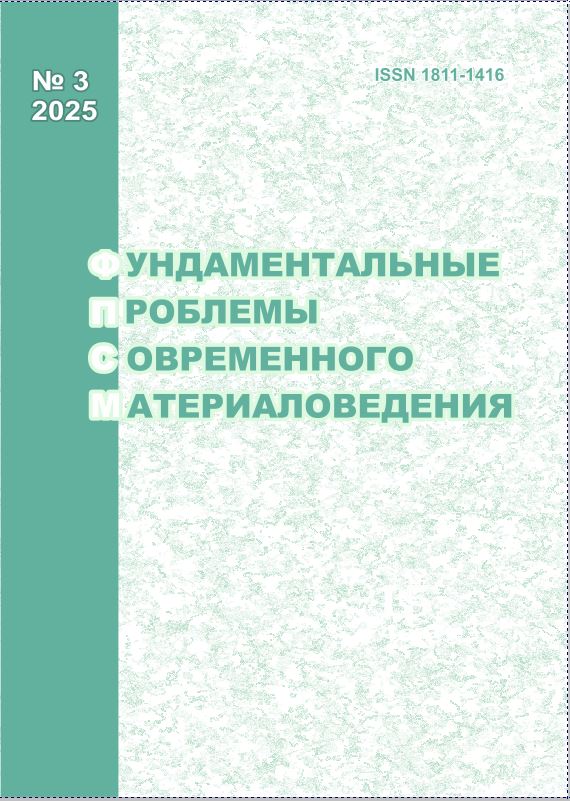STRUCTURE AND PHASE COMPOSITION OF A BIMETALLIC NI-TI ALLOY PRODUCED BY A WIRE-FEED ELECTRON-BEAM ADDITIVE MANUFACTURING
10.25712/ASTU.1811-1416.2025.03.012
Keywords:
electron beam additive manufacturing, titanium, nickel, intermetallics, scanning microscopy, microstructure, microhardnessAbstract
The production of Ni-Ti-based alloys by additive manufacturing is one of the most topical technological tasks, the solution of which would help to reduce the cost and simplify the production of large-sized functional products of complex shape. In this work, a sample of a bimetallic Ni-Ti alloy was produced by the method of wire electron beam additive manufacturing (EBAM) by layered deposition of Ni layers in its lower part, and then Ti layers in the upper part. According to X-ray diffraction analysis and energy dispersive X-ray spectroscopy, the resulting multilayer bimetallic sample contains many phases, the presence and distribution of which depends on the ratio of Ni and Ti in each layer. These phases are pure Ni in the lower part of the sample, α–Ti with different concentrations of dissolved nickel in the upper part, and Ni3Ti, NiTi, and NiTi2 intermetallics in the central "transition" region between Ni and Ti. The microhardness in the "transition" region varies over a wide range of 3.5 – 5.5 GPa values. It is determined by the ratio and distribution of intermetallic phases formed due to different ratios of elements and the "thermal history" of each subsequent layer. The analysis of metallographic images and scanning electron microscopy images showed that there are no macroscopic or microscopic pores or cracks in the resulting material, and the material within each layer is continuous. These findings confirm the prospects of using the EBAM method for the production of functional intermetallic alloys based on Ni-Ti and bimetallic materials based on them.











 Journal «Fundamental’nye problemy sovremennogo materialovedenia / Basic Problems of Material Science»
Journal «Fundamental’nye problemy sovremennogo materialovedenia / Basic Problems of Material Science» This work is licensed under a
This work is licensed under a 
